Archive of Gerontology and Geriatrics Research
Application of Machine Learning in Identifying Premature Aging
Madina Suleimenova1, Kuat Abzaliyev2, Akbota Bugibayeva3*, Symbat Abzaliyeva4, Diana Sundetova3, Almagul Kurmanova2, Absatarova Karashash5, Ardak Nurbakyt6, Jardemova K7, Merey Abdykassymova3, Raziya Ospanova8, Nazipa Baizhigitova9, Ulzhas Sagalbayeva3 and Raushan Bitemirova3
2Professor, Doctor of Medical Science, Al-Farabi Kazakh National University, Almaty, Kazakhstan
3Senior Lecturer, Al-Farabi Kazakh National University, Almaty, Kazakhstan
4PhD, Al-Farabi Kazakh National University, Almaty, Kazakhstan
5Master, Senior Lecturer at the Department of Epidemiology, Biostatistics and Evidence-Based Medicine, Faculty of Medicine and Health, Al-Farabi Kazakh National University, Almaty, Kazakhstan
6Professor, Department of Public Health, Asfendiyarov National Medical University, Kazakhstan
7General Director LLP «A-Clinic», Kazakhstan
8Cardiologist the RSE “National Hospital”, Kazakhstan
9Medical Director Smart Health University City, Almaty, Kazakhstan
Cite this as
Suleimenova M, Abzaliyev K, Bugibayeva A, Abzaliyeva S, Sundetova D, Kurmanova A, et al. Application of Machine Learning in Identifying Premature Aging. Arch Gerontol Geriatr Res. 2024;9(1):013-021. Available from: 10.17352/aggr.000038Copyright License
© 2024 Suleimenova M, et al. This is an open-access article distributed under the terms of the Creative Commons Attribution License, which permits unrestricted use, distribution, and reproduction in any medium, provided the original author and source are credited.Previously pathological ageing is known to be mainly associated with the development of cardiovascular disease, which is caused by a combination of socioeconomic, metabolic, behavioural, and environmental risk factors. These include sex differences, age, high blood pressure, obesity, low physical activity, smoking, heavy alcohol consumption, high cholesterol and glucose levels, and diabetes mellitus. All processes occurring in the human body are reflected in biochemical and immunological analyses, which may be markers of early cardiovascular aging. The authors investigated correlations between social factors such as education, work, gender, family life, disability, physical activity, smoking and alcohol, and clinical findings such as coronary heart disease (CHD), postinfarct cardiosclerosis (PICS), chronic heart failure (CHF), diabetes mellitus (DM), body mass index (BMI), glucose levels, total cholesterol (TC) and blood pressure (BP) in older individuals. The authors implemented the basic model using R programming language, RStudio version 2023.09.0+463 on a device running MacBook Air M1, 8 GB RAM to identify the association between clinical data and social life. Also, two mathematical models (1)-(3) were proposed to calculate the correlation in combination with traditional machine learning classifiers between clinical data (biomarkers) and the social life of a patient in the age group of 60-74 years, 75-89 years and 90 and above.
Introduction
The age structure of the population has changed radically over the years; the demographic situation of recent decades has been characterised by an increase in the number of elderly and old people. According to the UN data, at present the elderly (over 65 years old) and seniors account for about 15% of the total population. The situation is paradoxical: life expectancy is low, while the share of elderly people, single people, and widows is growing. Such demographic changes become a serious economic factor due to the decreasing share of the working-age population and increasing healthcare costs, a significant part of which falls on the elderly [1-3].
Increasing human life expectancy, reducing morbidity, and preventing premature ageing are the most important tasks of modern preventive medicine. Age-related changes affect the cardiovascular system before other systems. It is the cardiovascular system that first of all determines the perspective: of longevity or early aging [1,2,4]. For decades, cardiovascular disease (CVD) has been the leading cause of mortality worldwide. In 2021, 20.5 million people will die from cardiovascular disease, representing about one-third of all deaths worldwide and a significant increase from the 12.1 million deaths from cardiovascular disease recorded in 1990. Coronary heart disease is now the leading cause of premature death in 146 countries among men and in 98 countries among women [5-7].
According to the World Health Organisation (WHO), there is a forecast of further growth of CVDs, as well as mortality from these diseases in both developed and developing countries due to changes in demographics (population ageing), growth of non-communicable diseases (NCDs) and lifestyle [8]. In Kazakhstan, as in the rest of the world, there is a tendency to increase morbidity from the pathology of the cardiovascular system, which can be explained, on the one hand, by improving the quality of screening examinations and better detection, and, on the other hand, by reducing the availability and quality of medical care [9].
Cardiovascular diseases affect the heart or blood vessels and can be caused by a combination of socioeconomic, metabolic, behavioural, and environmental risk factors. These include sex differences, age, high blood pressure, obesity, low physical activity, smoking, harmful use of alcohol, high cholesterol and glucose levels, and diabetes mellitus. An analysis of the literature data showed that the prevalence of risk factors in limited populations is mainly studied [10-12].
There is some scientific evidence that among men and women, the correlation between the risk of CVD development is levelled with age [14]. Recent evidence suggests a reduction in morbidity and mortality from coronary heart disease (CHD) in men, but not in women. Sex and age are accounted for in the vast majority of cardiovascular health studies as one of the most important unmodified risk factors. Sex and age are included in most CVD prediction models [13,14]. Thus, the study of risk factors for CVD development in older people is a relevant area of preventive medicine.
In 2021, according to the Global Burden of Disease Study, high blood pressure was the leading modifiable risk factor for mortality worldwide and was responsible for 10.8 million deaths from cardiovascular disease worldwide [5,13]. According to WHO, obesity is a new non-communicable “epidemic” of the 21st century. The high prevalence of this disease is due to urbanisation, decreased physical activity, and the availability of calorie-dense food [13,14]. Numerous scientific studies conducted show a close relationship between overweight, obesity, and the development of CVD [15]. One of the causes of obesity is lack of physical activity, which is one of the main FRs of CVD. Multiple studies have proven the relationship between hypodynamia and the development of CVD, in addition, low physical activity increases the risk of type 2 diabetes mellitus, obesity, cancer, and osteoporosis. These diseases are also called age-related diseases [12,13]. According to scientific estimates, smoking is responsible for 10% of cardiovascular diseases and is the second leading cause of CVDs after high blood pressure. Exposure to tobacco smoke does not only affect smokers. Nearly 6 million people die each year from tobacco use or exposure to secondhand smoke, accounting for 6% of deaths among women and 12% of deaths among men worldwide. Tobacco-related deaths are projected to increase to more than 8 million deaths per year by 2030 [16-19]. In 2019, more than 2.4 million people died due to alcohol, accounting for 4.3% of all deaths globally and 12.6% of deaths among men aged 15 to 49 years. Scientific studies have shown that even small amounts of alcohol can increase the risk of cardiovascular disease, including coronary heart disease, stroke, heart failure, hypertensive heart disease, cardiomyopathy, atrial fibrillation, and aneurysm [20].
In order to reduce mortality from CVDs, it is necessary to develop, first of all, the preventive direction. Prevention is based on the ability of health care to identify and, if possible, correct risk factors for CVD development [5,10,11]. Accordingly, the impact of CVDs on the level of health of the world’s population makes the scientific community search for and find new ways to solve this problem. One of the ways to solve this problem is the development of information technology in medicine, which is applied at all stages of medical care from basic research to care, and includes many specialisations such as bioinformatics, medical informatics, and biomedical informatics [21]. According to the literature, the high efficiency of clinical use of information technology and programming is to reduce the number of complications and adverse outcomes, social and economic benefits, and improve the quality of life. The merits of introducing these technologies into clinical practice have been the subject of debate over the past decades [21,22].
In [23], the author reveals the active development of information technologies, which play an important role in modern processes of informatisation of various spheres of society, including medicine. The introduction of the latest IT developments in medical systems gives these processes significant social significance. Artificial intelligence technologies, such as machine learning, artificial neural networks, and deep learning, have become especially in demand. The paper is devoted to the study of trends and assessment of prospects for the use of machine learning methods in medical systems. The application of machine learning in medicine is important because it improves the speed, quality, and reliability of various tasks, facilitating the work of specialists and providing them with software support. The work analyses the main global trends in this area, key technologies, and developers of systems based on machine models, and identifies factors that limit this process. Moreover, according to the study [24], artificial intelligence is increasingly being implemented in medicine, and the number of companies developing AI solutions for healthcare is growing every year. AI is already capable of assisting physicians in diagnosis, but its application is limited to point tasks due to the lack of verified data, poor protection of medical devices, and lack of legislative framework. In the future, systems that can comprehensively analyse data from different sources will be most effective. However, as pointed out in [25], the use of accurate predictive models based on machine learning algorithms opens new opportunities for predicting non-communicable diseases, their complications, and the probability of hospitalisation, which allows timely prescription of preventive and treatment measures. The literature review confirms the high accuracy of such models in cardiology, neurology, genetics, and other fields, with Random Forest, neural networks, and XGBoost algorithms proving to be the most effective. The implementation of these algorithms in medical information systems promises to improve the prediction of medical events and is in line with global trends in personalised medicine. The growth of research in this area highlights the need to further explore and optimise machine learning technologies for wider application.
Currently, machine learning and the use of the R language are actively used in medicine to diagnose and predict diseases, determine risk factors, create databases, and monitor the condition of patients.
Objective
To identify markers of early cardiovascular disease and aging using machine learning.
Materials and methods
Within the framework of the scientific and technical project, a scientific study was conducted in Almaty. Patients were recruited according to the inclusion and exclusion criteria with the mandatory signing of the informed consent form of the scientific and technical programme “Development of markers and diagnostic algorithm for detection and prevention of early cardiovascular aging”. The study is a fragment of the research project of the Ministry of Science and Higher Education of the Republic of Kazakhstan State Registration No. AP19677754.
The study included respondents of both sexes (n = 689) aged 60 to 90 years and older who gave informed consent to participate in the study. Subjects were divided into 3 age groups according to WHO classification: 60-74 years - elderly (n = 395), 75- 89 years - senile (n = 284), 90 years and older - age of long-livers (n = 10), observed in polyclinics and medical centres of Almaty (clinical bases of KazNU named after Al-Farabi: City Clinical Hospital №1, Central Clinical Hospital). This study did not include patients with infectious diseases (HIV, tuberculosis, acute course), inflammatory diseases (acute), mental illnesses that limit adequate cooperation, or allergic reactions.
The study includes several stages. In the first stage, the following study was carried out:
− Questioning of medical history, to find out the presence of risk factors for cardiovascular events and related diseases, a questionnaire was used, including the following data: age, sex, dietary pattern, smoking, motor activity, family cardiovascular history, presence of diabetes mellitus, taking medications, blood pressure level in the history, also a study of medical records such as hospital discharge, outpatient cards was carried out.
− Blood pressure was measured using a tonometer according to the standard method of N.S. Korotkov sitting down, after a 5-minute rest, on the right arm three times with a calculation of the average of the last two measurements. Degrees and stages of arterial hypertension (AH) were assessed according to the European ESH guidelines (2020, 2023).
− The degree of general obesity was determined according to the body mass index (BMI kg/m2), BMI was estimated according to WHO expert recommendations (WHO European Regional Obesity Report, 2022): normal body mass - 18.5-24.9; overweight I degree - 25.0-29.9; II degree - 30.0-39.9; III degree - >40.
In the second stage, general clinical instrumental and laboratory examination was carried out: general blood and urine analysis, blood biochemical analysis, and ECG.
- All laboratory parameters were determined according to generally accepted methods. Venous blood taken after 12-14 hours of fasting in the morning on an empty stomach was studied. Laboratory examination included the study of the level of total cholesterol (TLC), and fasting glucose. Hypercholesterolaemia was assessed according to the Association of Cardiologists Recommendations (Disorders of lipid metabolism. Clinical Guidelines 2023). Fasting blood glucose >6.1 mmol/l was considered as hyperglycaemia. Glucose tolerance disorder corresponded to the level of capillary blood glucose after loading in the following range of 7.8 - 11.1 mmol/l (American Diabetes Association. Standards of medical care in diabetes - 2021).
- Electrocardiography (ECG) - was used to detect postinfarction cardiosclerosis (myocardial ischaemia, scarring changes, hypertrophy of different parts of the heart). A 12-channel electrocardiograph was used.
In this study, we analysed the prevalence of arterial hypertension (AH), coronary heart disease (CHD), chronic heart failure (CHF), diabetes mellitus (DM), and postinfarction cardiosclerosis (PICS) in all age groups, as well as the value of fasting cholesterol (FBC) and blood glucose levels. The correlation between the indicators of social life and risk factors for CVD development in patients in the age groups 60-74, 75-89, and 90+ was determined.
Statistical analysis of the data was performed at the Department of Epidemiology, Biostatistics, and Evidence-based Medicine. Statistical analysis of the obtained data was performed using the SPSS Statistics 22.0 package (IBM, USA). Descriptive statistics: the results of the study are presented for quantitative variables with distribution different from normal in the form of mean deviation and for qualitative variables in the form of fractions (per cent). Analytical statistics: non-parametric statistical criteria were used for comparative analysis of data: Kruskal-Wallis rank criterion. Differences were considered statistically significant at p < 0.05.
After examining the prevalence of risk factors in the study groups, correlation analysis was performed using R programming language. The analysis included an evaluation of the relationships between different variables, which allowed the identification of statistically significant correlations and to assess the strength of the association between risk factors and study outcomes. Programming in R language ensured accuracy and efficiency in performing the analytical procedures and also allowed visualisation of the results for a better understanding of the relationships between the variables. As previously stated, “RStudio” version 2023.09.0+463 was used to retrieve the data and helped calculate correlations in combination with traditional machine learning classifiers between clinical data (biomarkers) and patient’s social life by age group 65-74, 75-89, and 90+. Our approach involved finding the association between biomarkers and for this purpose Pearson correlation coefficient is widely used:
The latter implemented the main model using R programming language, RStudio version 2023.09.0+463 on a device running MacBook Air M1, 8 GB RAM to detect the relationship between clinical data and social life.
Results and discussion
The study found significant correlations between social factors such as education, work, gender, family life, disability, physical activity, smoking, and alcohol and clinical data such as coronary heart disease, postinfarction cardiosclerosis, chronic heart failure, diabetes mellitus, body mass index, glucose level, total cholesterol, and blood pressure.
According to the analysis of the results of clinical examination, the presence of CVD was revealed in an average of 74% of those included in the study. A regular increase in the prevalence of risk factors with increasing age was found: in the elderly group - 71%, in the elderly group - 76%, and in the long-livers - 80%.
The following parameters were assessed: age, sex, marital status, education, type of employment of the respondents for the last 12 months
In preliminary analysis, the socio-demographic status of 689 study participants was studied. Out of them, 291 (42.2%) males and 398 (57.7%) females were examined (Table 1). The study revealed 223 (76%) men and 261 (65%) women had CVD and risk of cardiovascular events.
A high percentage were persons with secondary education, mostly in the elderly group - 66 per cent. In the elderly group, persons with higher education prevailed - 65% and in the long-livers - 60%. According to the results of our study on the probability of surviving to old age the level of education has no statistically significant dependence (p = 0,03). Thus, the evaluation of the obtained data on the level of education in the groups as an indicator of general awareness showed the absence of statistically significant differences, indirectly indicating the development of a risk factor for cardiovascular pathology.
According to the social status, it is noteworthy that in all groups 98% of respondents indicated their financial status as average, and only 4.2% of respondents are working, as most of the respondents are in retirement age.
Thus, the analysis of the socio-demographic status of the group with age features and risk of cardiovascular event development showed the dependence of cardiovascular event development on the age and sex of respondents, no differences in dependence on other socio-demographic indicators were found.
One of the main criteria for reducing the risk of cardiovascular pathology is the management of modifiable risk factors. The prevalence of cardiovascular risk factors such as smoking, alcohol consumption, low physical activity, arterial hypertension, and hypercholesterolemia was assessed in the analysed sample in order to develop technologies to influence them.
In the study, the highest prevalence compared to other factors was low physical activity. Lack of physical activity as a significant risk factor was reported by a total of 21.5% of respondents. Among 75-89 and 90 years and more respondents not having physical activity was higher (37.7%, 20%) than among 60-74 years of study participants (18%).
Among the studied persons 60-74 and 75-89 years old, 20% smoke, and over 90 years old only 3 respondents smoke out of 10 studied.
Alcohol consumption as one of the modifiable risk factors was indicated by 10.7% of respondents. Among 60-74 year olds, the prevalence of alcohol use was 10.6%, and among 75-89 year olds, 7.8%. The studied long-livers responded that they did not consume alcohol.
Thus, on average, in all groups, there was an insignificant prevalence of risk factors such as smoking, alcohol consumption, and hypodynamia.
The frequency of cardiovascular disease development has a reliable dependence on physical activity. A significant difference was found between individuals with CVD with low physical activity compared to those without CVD (p = 0.009). When assessing the statistical significance of differences between two or more relative indicators by Pearson’s criterion (chi-square), a correlation between education and physical activity was found. Thus, people with higher education show greater physical activity compared to their peers without higher education. Gender, smoking, and alcohol consumption have no significant association with physical activity. Smokers were also found to have a significantly increased risk of CVD and the development of complications of this pathology compared to non-smokers (p < 0.001). There was a small significant difference between the influence of alcohol consumption on the development of cardiovascular diseases and their progression (p = 0.010).
Blood pressure elevation was detected in more than half of the examined subjects and the prevalence in each age group had no significant difference: in the elderly group was 71%, in the senile group-76%, and in the group of long-livers-70%. Among those with cardiovascular disease, arterial hypertension was observed more frequently (69.08%) compared to those without event (10.33%). Men with cardiovascular events noted the fact of previously recorded BP elevation in 10.5% of cases. Women with acute cardiovascular events noted a history of arterial hypertension in 100% of cases.
The nonparametric Kruskal-Wallis test was used for comparison between the groups (Figure 1).
The prevalence of hypercholesterolemia in the studied sample, as a risk factor having the value of atherosclerosis substrate, in terms of anamnestic data, was 24.5% of cases. Elevation of the level of total cholesterol is the main factor of atherosclerosis-associated diseases and also has age-specific features in different populations. When studying lipid metabolism in the studied groups, the mean values of OXC level in the studied groups were within the acceptable norm and were 4.7±1.8 mmol/l; 4.4±1.1 mmol/l; and 4.4±1.4 mmol/l, respectively. Elevated OXC levels were found in 22% elderly, and 15% senile (Figure 2).
When studying the indicators of carbohydrate metabolism in the studied groups, fasting glucose levels were 6.1±2.5mmol/l; 6.0±2.4mmol/l; and 6.6±4.4mmol/l, respectively. All groups showed significant increases in fasting glucose, statistical significance was p = 0.020. In the first group, hyperglycaemia was detected in 27% of the respondents of which 55% of the respondents had DM, in the second group 27% had fasting glucose elevation and 57% of them were diagnosed with DM, and in the last group only 20% had elevated glucose levels, only 1 respondent had DM (Figure 3).
Obesity is now considered an independent risk factor for type 2 DM and CVD. In the whole age group, more than half are overweight and obese: in the elderly age group 66%, the senile group 50%, and the long-lived 40% (Figure 4).
IHD is assessed by taking into account anamnestic data, medical records, and ECG data. CHD should be considered as a disease that develops in response to one or more risk factors. The highest incidence of CHD was found in the elderly age group (60-74 years) and constitutes 70.7%. PICS was detected in 8.9% of the respondents in the older age group. This indicates the importance of IBS and MI prevention. In all groups, a high occurrence of CHD 3rd degree (NYHA) was found in all groups: in the elderly group was 68%, old age group 64%, and long-lived group 60%. In the present study, 24% of the subjects were diagnosed with DM and the incidence was highest in the older age group-25% (75-89 years).
Thus, modifiable factors like alcohol consumption, hypodynamia, overweight, and abdominal obesity did not give statistically significant differences in different age groups. However, a statistically significant inter-group effect was observed between the effect of older age and BMI on the prevalence of AH (p = 0.009). Also found a statistically significant difference of older age with BMI, and OHS on the occurrence (p = 0.008, p = 0.004).
In the current study, non-modifiable risk factors such as age and sex showed significance in the development of cardiovascular pathology and CVD risk factors. Analysis of socio-demographic, and laboratory parameters in the elderly and senile group revealed the presence of abnormalities in a number of screening parameters such as smoking, alcohol consumption, BMI, blood pressure, fasting blood cholesterol, and blood glucose levels.
The study found significant correlations between social factors such as education, work, gender, family life, disability, physical activity, smoking, and alcohol and clinical data such as coronary heart disease, postinfarction cardiosclerosis, chronic heart failure, diabetes mellitus, body mass index, glucose level, total cholesterol, and blood pressure. Patient’s social data such as gender, marital status, education, disability, work, physical activity, smoking, and alcohol were arranged on the x coordinate. Patient’s clinical data such as CHD, PICS, CVD, DM, BMI, Glucose, OXO, and AH were placed on y coordinate. The following heat map for the age group 60-74 years Figure 5 shows the following:
The correlation coefficient value ranges from -0.1 to 0.2. According to our data, a good correlation was found between postinfarction cardiosclerosis (PICS) and smoking (r = 0.2). (Figure 6).
Also, smoking is positively correlated with CHD (r = 0.15). The same relationship can be observed between postinfarction cardiosclerosis and alcohol, which emphasises the importance of avoiding bad habits to maintain heart health. A positive correlation was found between physical activity and OXC (r = 0.1), emphasising the importance of regular exercise in controlling total blood cholesterol. No association was found between BMI and gender and diabetes mellitus and marital status.
However, in our study, we can detect inverse relationships such as total cholesterol and smoking (r = -0.1) and postinfarction cardiosclerosis and gender (Figure 6). The results reflect the analysis of data collected in a study conducted among individuals in the age group of 65 to 74 years.
Further for the next age category 75-89 years old, the results are as follows (Figure 7):
In this group, the correlation coefficient ranges from -0.1 to 0.1. A good correlation is observed between blood pressure and smoking, as well as with alcohol (r = 0.1). This may indicate that higher alcohol consumption and smoking are associated with higher blood pressure. That is, the more a person consumes alcohol and smokes, the higher their blood pressure (Figure 8).
In our study, coronary heart disease and chronic heart failure also show a positive association with alcohol (r = 0.1). Our results support the assumption that there is a statistically significant positive association between the level of chronic heart failure and alcohol consumption, with higher alcohol consumption being associated with an increased risk of developing or worsening CHF. It is also worth considering that coronary heart disease has no association with a patient’s education and diabetes mellitus (DM) does not correlate with bad habits like smoking and alcohol (r = 0). It can be noted that also in this group, the inverse relationship between postinfarction cardiosclerosis and sex remained.
The results of the data analysis showed an interesting correlation between blood glucose levels and education level. The results suggest that the level of education has an influence on blood glucose levels, which emphasises the importance of considering socioeconomic factors when assessing the risk of developing diabetes mellitus and other metabolic diseases. The findings are based on data collected from study participants belonging to the age group of 75 to 89 years.
Continuing the discussion on the impact of age on health, we move on to the older age group (90+) and look at what factors may play a key role in this category. We found that the correlation coefficient can range from -0.4 to 0.4, indicating the strength and direction of the relationship between variables (Figure 9). The result is shown below:
Analysing the data obtained, our study revealed interesting results regarding the association between total cholesterol and gender (r = 0.4). A positive correlation was found between total cholesterol levels and female gender, indicating that women who tend to have higher cholesterol levels may have an increased risk of cardiovascular disease. This result highlights the importance of considering gender differences when assessing cardiovascular risk factors and providing a personalised approach to prevention and treatment.
It is important to note that in this age category, as well as in the previous ones, the inverse correlation between postinfarction cardiosclerosis and gender is still present (r = -0.4). Also, the study found a significant positive correlation between smoking and the risk of developing chronic heart failure (r = 0.3). People who smoke are at high risk of developing or worsening CHF compared to non-smokers. This emphasises the serious cardiovascular health consequences of smoking and the importance of controlling the tobacco epidemic to prevent heart disease. We found that there was no statistically significant association (r = 0) between education level and the presence of chronic heart failure. This result may indicate that education level is not a significant factor in assessing the risk of developing CHF in our sample. We found no significant association between total cholesterol level and marital status in our sample (r = 0). This result shows that marital status probably has no significant effect on cholesterol levels in our study subjects. However, a moderate inverse association was found between physical activity and diabetes mellitus, level of chronic heart failure, and blood pressure (r = -0.3). These results support the need to include physical activity in recommendations for the prevention and treatment of cardiovascular disease and the importance of a healthy lifestyle for public health. The findings are based on analyses of data collected among study participants over 90 years of age. The selection of this unique age group provides further insight into the factors that influence longevity and quality of life in older age.
Discussion
Demographic trends in the world in recent decades have clearly outlined the problem of elderly patients. The age composition of the population is changing towards the predominance of elderly and senile people. Currently, more than 10% of the world’s population is made up of elderly people. It is predicted that in the near future, this proportion will increase to 30%. [1-4]. At present, almost 90% of those seeking therapeutic help are elderly and old people. Most of them are exposed to such common cardiovascular diseases as arterial hypertension, atherosclerosis of the main arteries of the head and neck, and ischaemic heart disease [26]. To date, there is insufficient data from modern large-scale clinical studies on the risk of cardiovascular events and the impact on aging in the elderly [26,27].
Thus, our study using programming revealed a significant correlation between smoking and CHD, and PICS in the elderly group. Cigarette smoking increases the risk of CVDs and complications and also affects ageing. Smoking increases the risk of CVD in individuals of both sexes and in any age group [28-30]. On the basis of numerous studies, the authors concluded that among smokers in all age groups, the majority of cases of CHD and PICS are due to smoking, which is consistent with the results of other clinical studies currently available [18,19,28-31]. In the elderly group, a good correlation was found between blood pressure, smoking, and alcohol. Also, our study showed the influence of alcohol consumption on the development of IBS and CVD (r = 0.1). Many studies have proved that daily alcohol consumption for a long time is associated with the development of coronary heart disease, arterial hypertension, ischaemic and haemorrhagic strokes, and atrial fibrillation [20,32]. However, some studies such as “The association of alcohol consumption with selected cardiovascular disease outcomes: a systematic review and meta-analysis” have shown that alcohol has a preventive effect on the development of CVD [20,32,33]. Thus, the influence of alcohol consumption on the development of CVDs requires further investigation. When assessing individuals over 90 years of age, a significant positive correlation between smoking and the risk of developing chronic heart failure was observed, and the influence of low physical activity on the course of diabetes mellitus, CVD, and AH was also found.
Conclusion
Thus, we were able to calculate correlations in combination with traditional machine learning classifiers between clinical data (biomarkers) and patient’s social life by age group 65-74 years, 75-89 years, and 90 and above. These findings emphasise the importance of physical activity for all age groups in the prevention of cardiovascular disease. Regular exercise can be an effective way to maintain health and reduce the risk of developing these diseases.
The results show that these age groups have their own unique characteristics and needs and it is important to develop individualised approaches to support and improve their wellbeing. It can also be concluded that the selected 2 mathematical models (1)-(3) can be considered as an experiment for future similar studies as they are in excellent agreement with the results.
Further research in this area may help to identify effective strategies to prolong an active and healthy life in both adulthood and old age.
Project of the State Institution Ministry of Science and Higher Education of the RK №АР19677754 «Development of markers and diagnostic algorithm for the detection and prevention of early cardiovascular aging».
- United Nations Department of Economic and Social Affairs (UNDESA), Population Division. World population prospects 2022: summary of results. New York: United Nations; 2022. Available from: https://www.un.org/development/desa/pd/sites/www.un.org.development.desa.pd/files/undesa_pd_2022_wpp_key-messages.pdf
- World Health Organization. WHO fact sheet: physical activity. Geneva: World Health Organization; 2020. Available from: https://www.who.int/news-room/fact-sheets/detail/physical-activity
- Paskaleva T, Tornyova B, Dragusheva S, Petleshkova P. Modifiable risk factors for premature aging. Biomed Res. 2019;30(3):426-31. Available from: http://dx.doi.org/10.35841/biomedicalresearch.30-19-144
- Pristrom MS, Pristrom SL, Semenenkov II. Aging is physiological and premature: modern view of the problem. Int Rev Clin Pract Health. 2017;5-6:1. Available from: https://cyberleninka.ru/article/n/starenie-fiziologicheskoe-i-prezhdevremennoe-sovremennyy-vzglyad-na-problemu-1
- World Heart Federation. World heart report 2023: confronting the world’s number one killer. Geneva, Switzerland: World Heart Federation; 2023. Available from: https://world-heart-federation.org/wp-content/uploads/World-Heart-Report-2023.pdf
- Lindstrom M, DeCleene N, Dorsey H, Fuster V, Johnson CO, LeGrand KE, et al. Global burden of cardiovascular diseases and risks collaboration, 1990-2021. J Am Coll Cardiol. 2022;80(25):2372-425. Available from: https://doi.org/10.1016/j.jacc.2022.11.001
- Global Burden of Disease (GBD) 2020 data - estimates for 2019. Available from: http://ghdx.healthdata.org/gbd-results-tool
- Chazova IE, Zhernakova YuV, Oshchepkova EV, Shal'nova SA, Iarovaia EB, Konradi AO, et al. Prevalence of cardiovascular risk factors in Russian population of patients with arterial hypertension. Kardiologiia. 2014;54(10):4-12. Available from: https://doi.org/10.18565/cardio.2014.10.4-12
- Cardiovascular diseases, a major epidemic of the 21st century: press release. 2013. Available from: http://www.medlinks.ru/article
- Cardiovascular prevention 2017: national guidelines. Russ J Cardiol. 2018;(6):7-122. Available from: https://doi.org/10.15829/1560-4071-2018-6-7-122
- Ageeva ES, Berseneva OA. The role of risk factors in assessing the development of cardiovascular diseases. Bull Khakass State Univ N.F. Katanova. 2014;8:6-9.
- Aleksandrov AA, Rozanov VB, Zvolinskaya EYu, Pugoeva KhS. The frequency of risk factors and the likelihood of developing fatal cardiovascular diseases among men aged 42-44 years. Cardiovasc Ther Prev. 2016;15(4):38-43.
- World Health Organization. The global burden of disease: 2004 update. Geneva: World Health Organization; 2023. Available from: https://www.who.int/publications/i/item/9789241563710
- Crea F, Battipaglia I, Andreotti F. Sex differences in mechanisms, presentation and management of ischaemic heart disease. Atherosclerosis. 2015;241(1):157-68. Available from: https://doi.org/10.1016/j.atherosclerosis.2015.04.802
- Gökler ME, Buğrul N, Metintaş S, Kalyoncu C. Adolescent obesity and associated cardiovascular risk factors of rural and urban life (Eskisehir, Turkey). Cent Eur J Public Health. 2015;23(1):20-5. Available from: https://doi.org/10.21101/cejph.a3958
- Drapkina OM, Shepel RN. Physical inactivity is the disease of the century: low physical activity as a risk factor for diseases of the cardiovascular system and premature aging. Cardiology: News, Opinions, Training. 2015;3. Available from: https://cyberleninka.ru/article/n/gipodinamiya-bolezn-veka-nizkaya-fizicheskaya-aktivnost-kak-faktor-riska-zabolevaniy-serdechnososudistoy-sistemy-i-prezhdevremennogo
- World Health Organization. Physical inactivity: a global public health problem. Available from: https://www.who.int/health-topics/physical-activity#tab=tab_1
- Mendis S, Puska P, Norrving B, editors. Global atlas on cardiovascular disease prevention and control. Geneva: World Health Organization (in collaboration with the World Heart Federation and World Stroke Organization); 2011. Available from: https://world-heart-federation.org/wp-content/uploads/2021/04/Global-Atlas-on-cardiovascular-disease-prevention-and-control.pdf
- Huxley R, Woodward M. Cigarette smoking as a risk factor for coronary heart disease in women compared with men: a systematic review and meta-analysis of prospective cohort studies. Lancet. 2011;378(9799):1297-300. Available from: https://doi.org/10.1016/s0140-6736(11)60781-2
- World Heart Federation. The impact of alcohol consumption on cardiovascular health. Available from: https://world-heart-federation.org/news/no-amount-of-alcohol-is-good-for-the-heart-says-world-heart-federation
- Evdokimov IV, Kovalenko MA, Melech DA. Management of the development and implementation of an accounting information system. Sci Rev Econ Sci. 2017;4:34-39. Available from: https://science-economy.ru/ru/article/view?id=950
- Serdyukov AG, Naberezhnaya IB, Zakharov DA. Sociological justification for the introduction of telemedicine technologies into practice. Deputy Chief Physician. 2008;2:12-20.
- Faizrakhmanov A. Machine learning in medicine: evolution and prospects.
- Bursov AI. Use of artificial intelligence for medical data analysis. Almanac Clin Med. 2019;47(7):630-3. Available from: https://cyberleninka.ru/article/n/primenenie-iskusstvennogo-intellekta-dlya-analiza-meditsinskih-dannyh. Accessed 22 July 2024.
- Gusev AV. Machine learning on laboratory data for disease prediction. Pharmacoecnomics. Modern Pharmacoecnomics Pharmacoepidemiol. 2021;14(4):581-92.
- Chernyavskaya TK. An elderly student at the School for Patients with Arterial Hypertension: Neurological reasons for unlearned lessons. J Consilium Medicum Neurol. 2011;2:23-24.
- Dyadyk AI, Bagriy AZ. Cardiovascular diseases in the elderly. Kyiv. 2013;8-18.
- Pujades-Rodriguez M, George J, Shah AD, Rapsomaniki E, Denaxas S, West R, et al. Heterogeneous associations between smoking and a wide range of initial presentations of cardiovascular disease in 1,937,360 people in England: lifetime risks and implications for risk prediction. Int J Epidemiol. 2015;44(1):129-41. Available from: https://doi.org/10.1093/ije/dyu218
- Tolstrup JS, Hvidtfeldt UA, Flachs EM, Spiegelman D, Heitmann BL, Bälter K, et al. Smoking and risk of coronary heart disease in younger, middle-aged, and older adults. Am J Public Health. 2014;104(1):96-102. Available from: https://doi.org/10.2105/ajph.2012.301091
- Menotti A, Lanti M, Nedeljkovic S, Nissinen A, Kafatos A, Kromhout D. The relationship of age, blood pressure, serum cholesterol and smoking habits with the risk of typical and atypical coronary heart disease death in the European cohorts of the Seven Countries Study. Int J Cardiol. 2006;106(2):157-63. Available from: https://doi.org/10.1016/j.ijcard.2004.12.092
- Gallucci G, Tartarone A, Lerose R, Lalinga AV, Capobianco AM. Cardiovascular risk of smoking and benefits of smoking cessation. J Thorac Dis. 2020;12(7):3866-76. Available from: https://doi.org/10.21037/jtd.2020.02.47
- Larsson SC, Wallin A, Wolk A. Alcohol consumption and risk of heart failure: meta-analysis of 13 prospective studies. Clin Nutr. 2018;37(4):1247-51. Available from: https://doi.org/10.1016/j.clnu.2017.05.007
- Ronksley PE, Brien SE, Turner BJ, Mukamal KJ, Ghali WA. Association of alcohol consumption with selected cardiovascular disease outcomes: a systematic review and meta-analysis. BMJ. 2011;342. Available from: https://doi.org/10.1136/bmj.d671
Article Alerts
Subscribe to our articles alerts and stay tuned.
 This work is licensed under a Creative Commons Attribution 4.0 International License.
This work is licensed under a Creative Commons Attribution 4.0 International License.
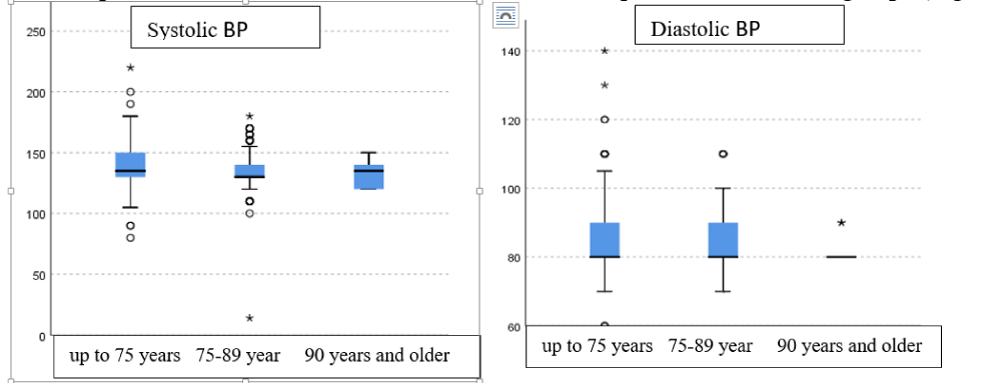
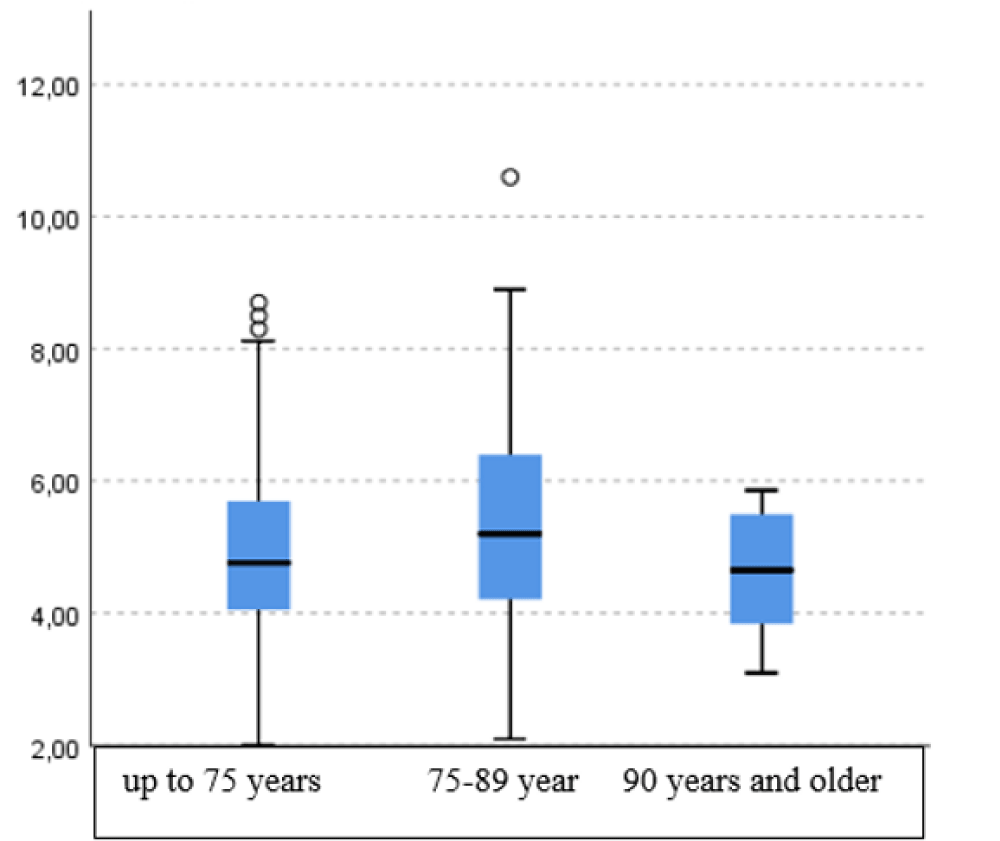
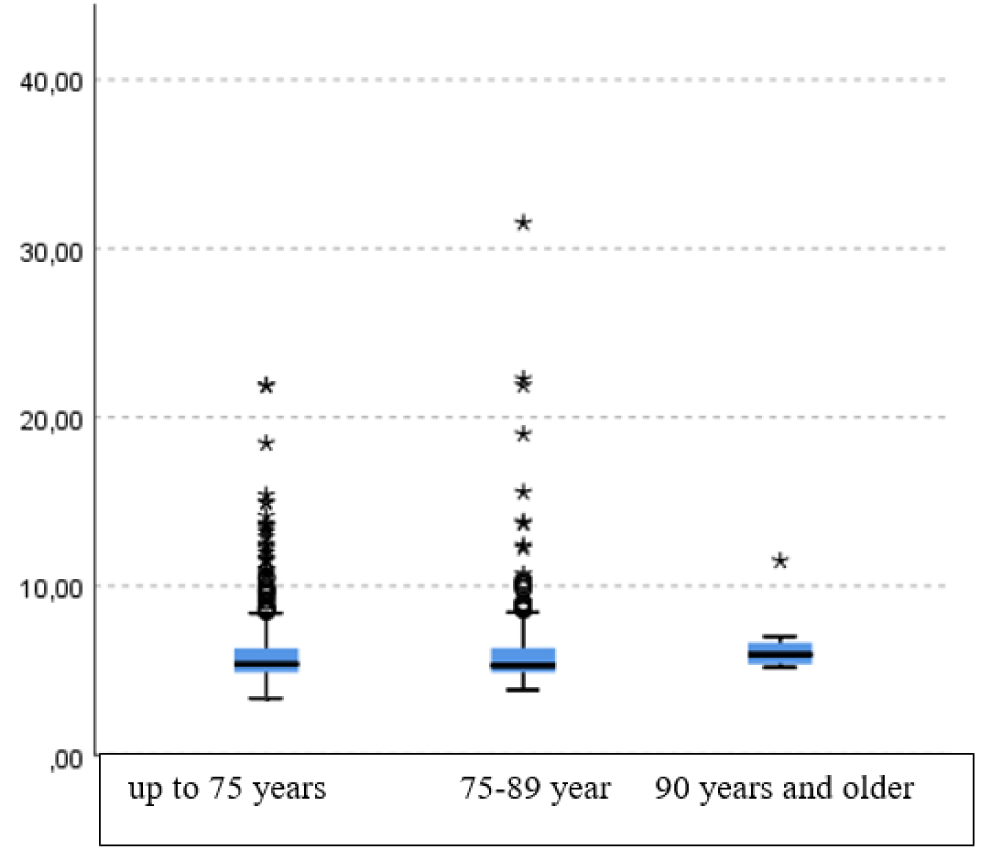
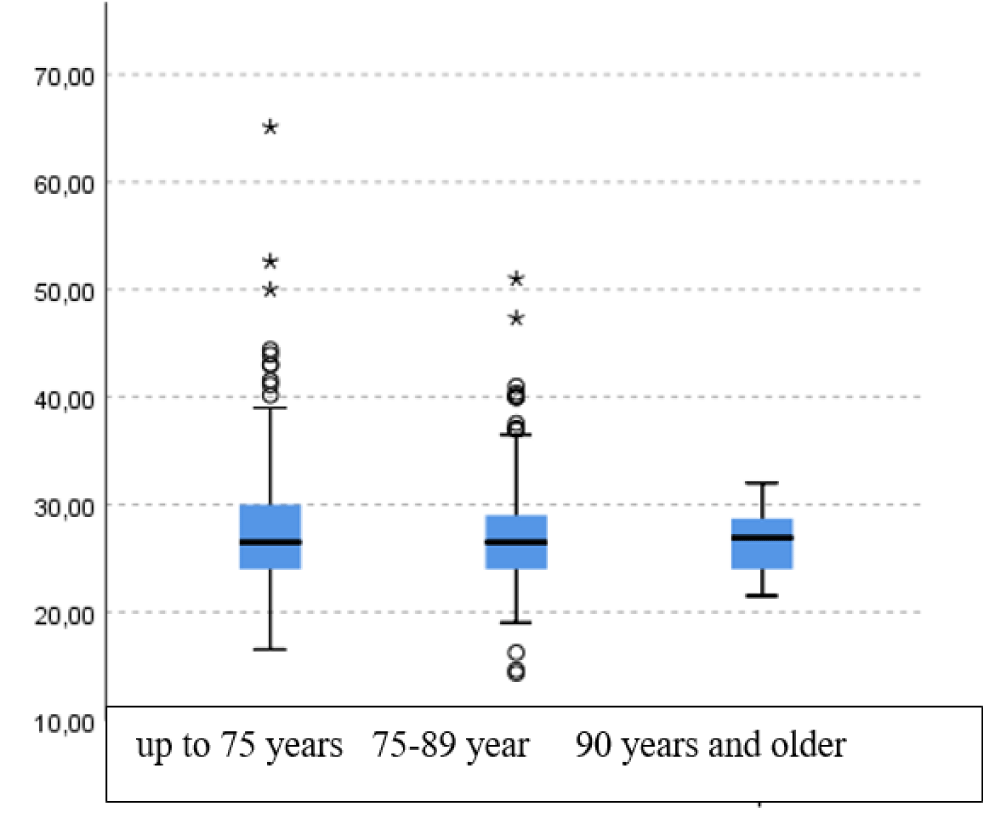
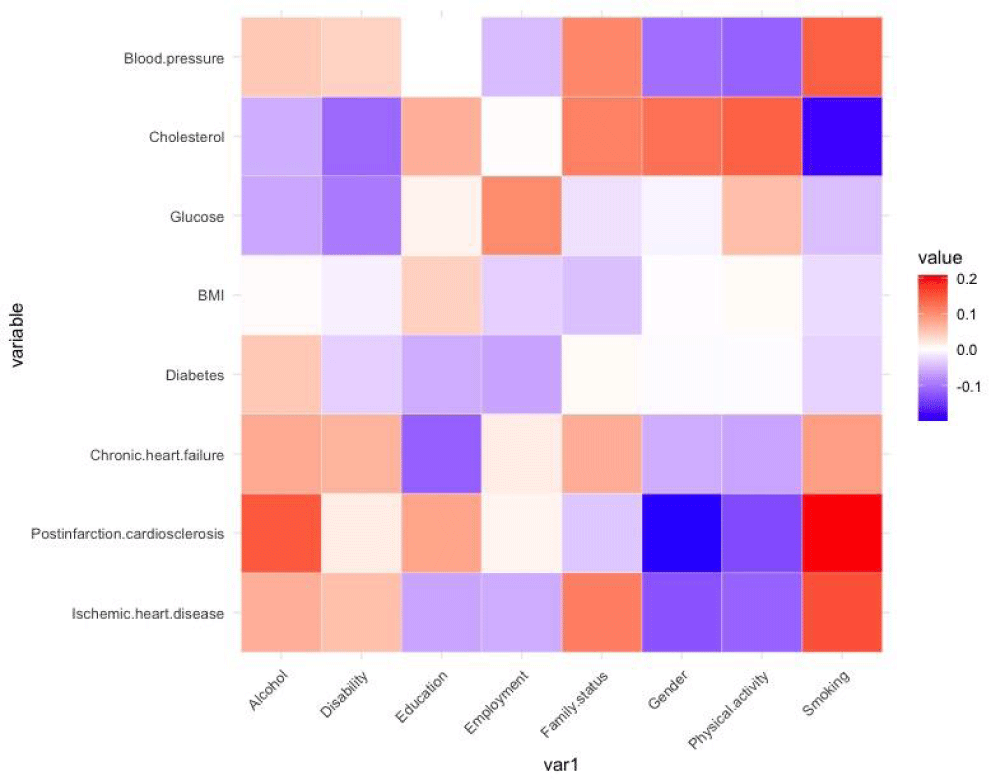
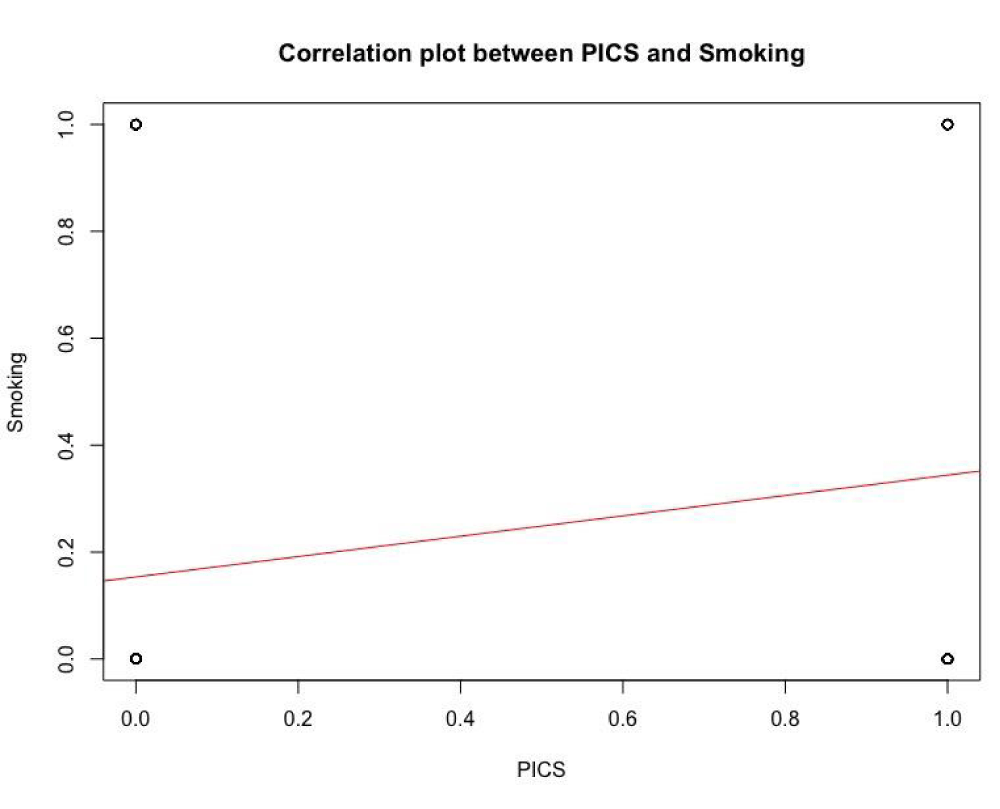
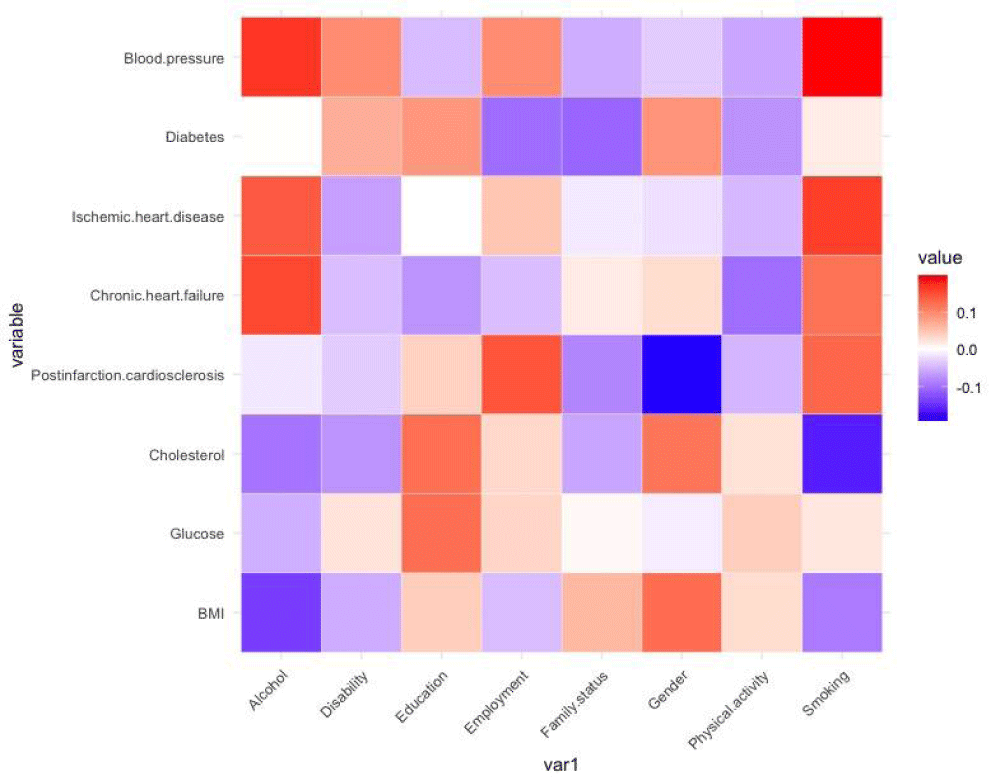
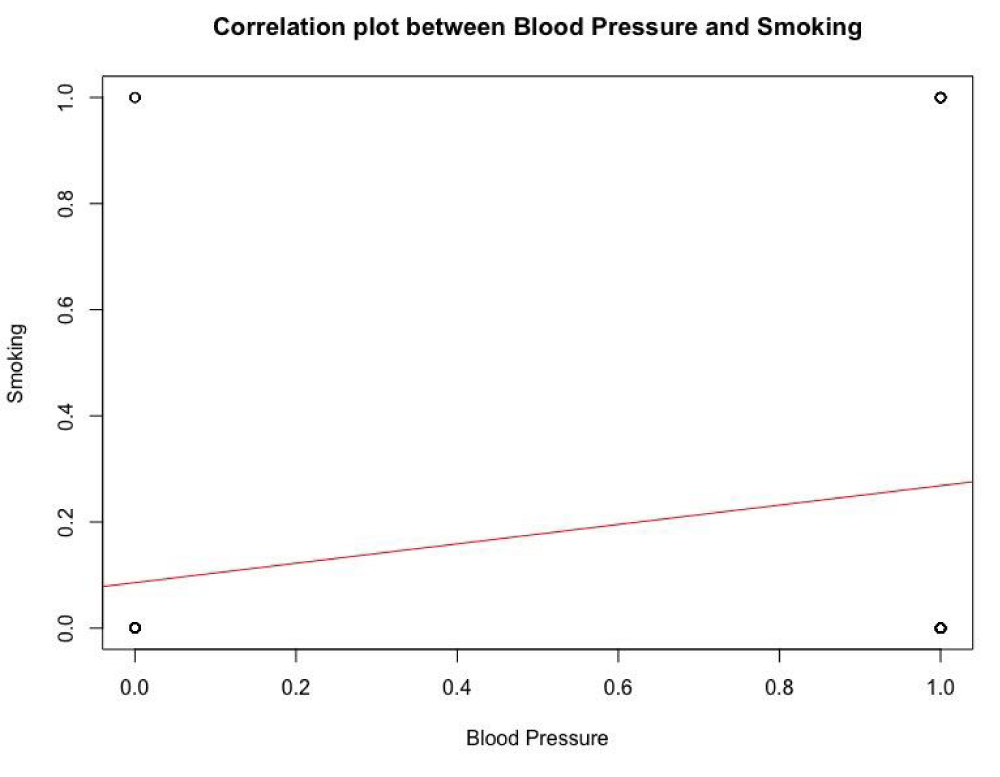
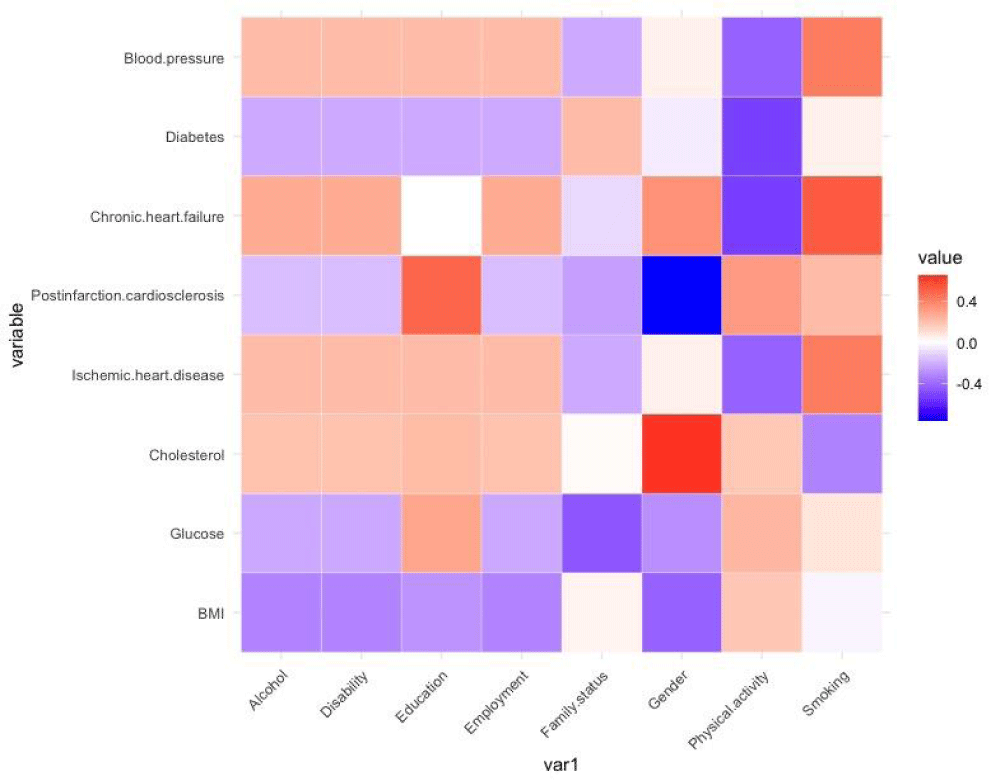


 Save to Mendeley
Save to Mendeley
